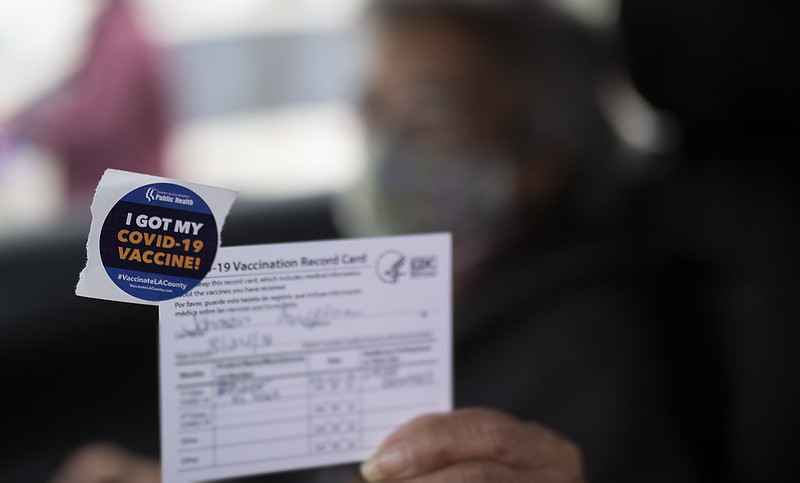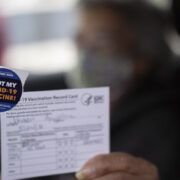
The vaccines are finally here! And they are excellent at preventing symptoms from COVID-19, including those severe and life-threatening cases that require hospitalization. I am grateful for having received my two doses since the vaccine is still in short supply.
Friends in our circle who have received it are happy. But others have expressed hesitancy, a worrying trend.
From conversations, some have raised moral and faith considerations for their reluctance.
The moral issue appears to derive from a belief that the vaccine involves the use of material from aborted fetuses, like stem cells and fetal cells. This is disinformation. From the manufacturers’ and Centers for Disease Control and Prevention (CDC) websites, no COVID-19 vaccines contain whole or partial human cells, or bits of human tissue. The vaccines of Pfizer and Moderna were developed using mRNA technology. It does not contain stem cells. Neither does the technology depend on prior research involving stem cells. Some vaccines that do not involve the use of mRNA technology may have been developed in part from prior research involving stem cells.
For those that do, religious leaders in major faith groups have determined that the current vaccines are sufficiently morally removed from the initial act of acquiring these cells, thus the vaccines themselves do not impose a moral burden on those who receive them. In Rome, many ancient roads were built by slaves; they are still in use today by the faithful. But their use now is morally distant from the practices of roman slavery and does not carry moral burdens as long as it does not result in slavery.
There is also this allegation that vaccination will “mark” people with “the mark of the beast” or the devil as mentioned in the Book of Revelation. The only basis I can think of for this absurd theory is the fact that a substance called luciferace may have been used in COVID-19 research. Luciferace is not a component in COVID-19 vaccines. And this term is not derived from “Lucifer” a name that designates the Devil in Christian theology. Luciferace,is derived from a latin term that means light-bearing. It denotes a substance that enables fireflies to emit light on summer nights. Only the most malevolent can think of linking the biblical beast to a substance whose Latin name denotes the bearer of light, and to a vaccine that saves lives.
When we told friends that we obtained appointments to be vaccinated some were anxious about side effects, especially health-threatening side effects. We received our second dose a week ago. For me, getting the first dose gave me just a very slight soreness at the jab point that lasted for less than a day. The second dose had more noticeable side effects, but none serious enough to take me out of my normal day’s activities. I felt more soreness at the jab pint. Plus a sense of lethargy a couple of days afterward, a feeling that I would normally associate with having had only a few hours of sleep. A couple of friends had relatively more bothersome side effects. One experienced flu-like symptoms (e.g., fever and muscle aches), while another had to sleep off these symptoms for a couple of days.
While not everyone in our circle has been vaccinated — only “seniors” like us, and those in health care — we have yet to hear of side effects worth talking about. No one has had to be hospitalized from the vaccine. On the other hand, many in our circle have experienced the disease. Four had to be hospitalized, and we know of folks dying from it.
As for other possible side effects, there is a rather high confidence level among health professionals that the vaccine is safe and that serious side effects are extremely rare.
They can be managed through monitoring procedures by having you wait half an hour at the vaccination site before allowing you to leave. Getting vaccinated is therefore safe in that one will be monitored, for possible health-threatening side effects right at the vaccination sites where emergency medical personnel are on standby just in case.
In the many conversations we have had on the Covid vaccine, a major concern revolves around the unknowns “Even if there is only a 1% chance of harmful side effects, what if I am in that 1%?”
To really objectively evaluate risks, I suggest we think much more broadly about the risks that we navigate through in our daily lives. For example, if we drive a car there is always a risk that we may get into a serious accident but we go on driving anyway. We all know of folks who have been in accidents. I had an officemate who was killed in one. We try to minimize the risks of serious injury by wearing a seatbelt; it is not a guarantee against serious injury, should we get into a crash, but it does minimize the risks of serious injury.
Think of what happens during the annual flu season. If we interact with people at work, at social gatherings, and at public places, there is a good chance that at some point during the season, we might get the flu. To minimize these, health professionals urge us, especially those who are most likely to suffer adversely from it, to get the flu shot. Again, that seasonal flu shot is not a guarantee that we will not get the flu. We know that in some years, the flu shot has not been very effective against the flu strain making the rounds.
The vaccine against COVID-19 is like the flu shot. It protects us against the debilitating and life-threatening symptoms of the virus. The vaccines available to Americans from Moderna and Pfizer/BioNTech, are said to be 95% effective. This is as close to a guarantee as one could possibly get.
Let us now look at the other side of the coin, the possible harmful side effects of the vaccine. There are plenty of publications from reputable sources — the CDC, John Hopkins, Michigan University Health, to mention a few — that attest to the minimal risks of getting vaccinated. I urge our readers to explore them.
As a reality check, the risks of harmful vaccine side effects must be compared against the risks of contracting COVID and suffering horribly from it, including death. Even a cursory glance at the numbers comparing the vaccine’s harmful side effects against the risks of contracting COVID and dying, the figures unequivocally show that the risks of contracting COVID and dying are vastly higher than the risks of serious vaccine side effects. To provide a context, the 500,000 plus deaths from COVID in the U.S. today is like having people dying from the 9/11 attack daily for six months.
The vaccine’s side effects, especially those serious medical conditions that could result in death, are considered rare. Nonetheless, as mentioned above, people are required to wait half an hour after receiving the vaccine since serious side effects are most likely to show up shortly after getting vaccinated. While unlikely, vaccination sites have medical personnel on standby to address any medical emergency. Having flu-like symptoms is much more likely than life-threatening side effects. These flu-like symptoms, by the way, are temporary, while death from COVID is permanent.
In Hamlet’s famous soliloquy, “To be, or Not to be,” he thinks about living or death, and observes that we would rather “suffer the slings and arrows of outrageous fortune,” than challenge the unknown, death and beyond; the fear of death, he says, makes cowards of all of us.
Does the matter of getting vaccinated against COVID rise to this level? Life or death, and our fear of the unknown making cowards of us?
Is death by COVID preferable to the pain, suffering, and the joys of living? Unfortunately, with COVID, one may have both pain and suffering before death. The way to struggle against it is to get vaccinated. In doing so, we reduce risks for our community, our families, and ourselves. The vaccine offers a pathway from the darkness of the pandemic to the dawn where we might once again get on with our lives. Let’s get it!
* * *
The opinions, beliefs and viewpoints expressed by the author do not necessarily reflect the opinions, beliefs and viewpoints of the Asian Journal, its management, editorial board and staff.
• • •
Enrique de la Cruz is Professor Emeritus of Asian American Studies at Cal State University, Northridge.








The Pfizer and Moderna mRNA shots are not vaccines by medical definitions.They are experimental gene therapies. Human cells are not designed to produce foreign proteins. The Pfizer and Moderna mRNA shots introduce a synthetic messenger RNA to instruct the human cells to produce a foreign Covid-19 spike protein. The long term side effects are unknown.
On March 4 the UK govt reported the adverse effects of the Pfizer shots as follows :
Blood disorder -2,033
Cardiac disorder-1,032
General disorders-26,391
Muscle-tissue dsorder-11,565
Nervous System disorder-16,107
Psychiatric disorder-3,575
Skin disorder-6,042
Vascular disorder-992
Death-212
Source : https://www.gov.uk/government/publications/coronavirus-covid-19-vaccine-adverse-reactions
Another UK Govt report dated March 3 said 460 people died and 243,612 reported injuries
Source: https://humansarefree,com/2021/03/deaths-injuries-from-covd-19-vaccines-reported-in-the-uk.html
According to Dr Sherri Tenpenny this is a Shot in the dark:
Source : https://www.youtube.com/watch?v=8iaKAWWGyWI